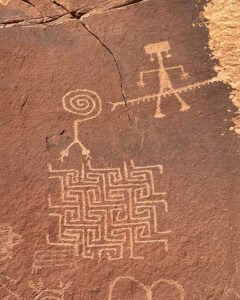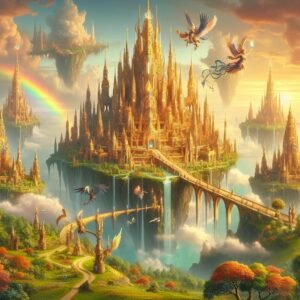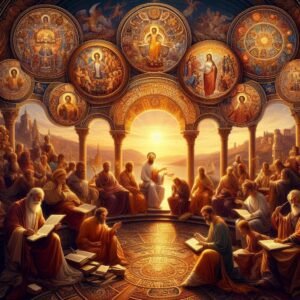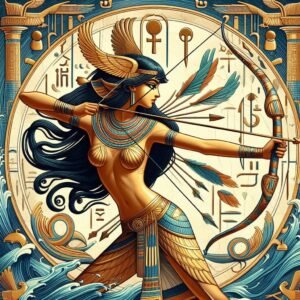
If it was certain, that the structure of the divinity, commonly known as God, comprised of five key aspects, The nothing, The ineffable one, The Mother-Father, The Creator, and The Creation. Which current belief systems would respect that structure?
The conceptualization of divinity as comprising five key aspects—The Nothing, The Ineffable One, The Mother-Father, The Creator, and The Creation—finds resonance within various belief systems, albeit with different terminologies and emphases.

For instance, the Kabbalistic tradition within Judaism may reflect such a structure in its depiction of the Ein Sof (The Infinite or The Nothing) and the subsequent emanations of the divine (Scholem, 1946).
In the Kabbalistic tradition within Judaism, the concept of Ein Sof, or the Infinite, is central to understanding the emanation of the divine and the structure of existence. Ein Sof is often described as the ultimate source of creation, an infinite presence without limit or end, preceding any form or thought (Wikipedia, n.d.). This boundless entity is not just a void but the potentiality for everything that exists, a sort of divine ‘Nothing’ that contains all possibilities. From this ‘Nothingness’, the process of creation begins with a series of emanations, known as the Sefirot, which are manifestations of divine attributes and the means through which the Ein Sof can create and interact with the universe (Jewish Virtual Library, n.d.).
The structure of the Sefirot often reflects a familial hierarchy, with the first three Sefirot—Keter (Crown), Chokhmah (Wisdom), and Binah (Understanding)—sometimes seen as corresponding to the archetypes of Father, Mother, and Creator, respectively. Keter is the will of God, the initial spark of creation; Chokhmah, the wisdom, is the dynamic force of creation; and Binah, the understanding, is the nurturing aspect that gives form to creation (Wikipedia, n.d.). These three lead to the creation of lower Sefirot, which represent various divine attributes and aspects of creation.
The interplay between the Sefirot reflects the dynamic balance between expansion and contraction, giving and receiving, and mercy and judgment. This balance is necessary for the harmonious functioning of the universe. The right side of the Sefirotic tree is associated with the masculine principle of giving, while the left side is associated with the feminine principle of receiving. The central column represents the balance between these forces, with Tiferet (Beauty) at its heart, embodying harmony and compassion (Jewish Virtual Library, n.d.).
The Kabbalistic depiction of creation is not linear but cyclical, with the flow of divine energy moving from Ein Sof through the Sefirot and back again, in a continuous process of renewal and return. This reflects the idea that creation is not a one-time event but an ongoing act of divine will and expression. The ultimate goal of this process is Tikkun Olam, the repair of the world, which is achieved through human actions that align with the divine will and help to restore balance and harmony to creation.
In summary, the Kabbalistic tradition presents a complex and nuanced view of the divine structure, where the Ein Sof is the source of all creation, and the Sefirot are the means through which the divine manifests and interacts with the world. This structure reflects a balance of masculine and feminine principles, a cycle of creation and return, and the ongoing potential for renewal and repair in the universe. For further reading on the intricate concepts of Kabbalah and the Sefirot, one might explore the detailed explanations provided in the Zohar and other classical Kabbalistic texts (Wikipedia, n.d.; Jewish Virtual Library, n.d.).
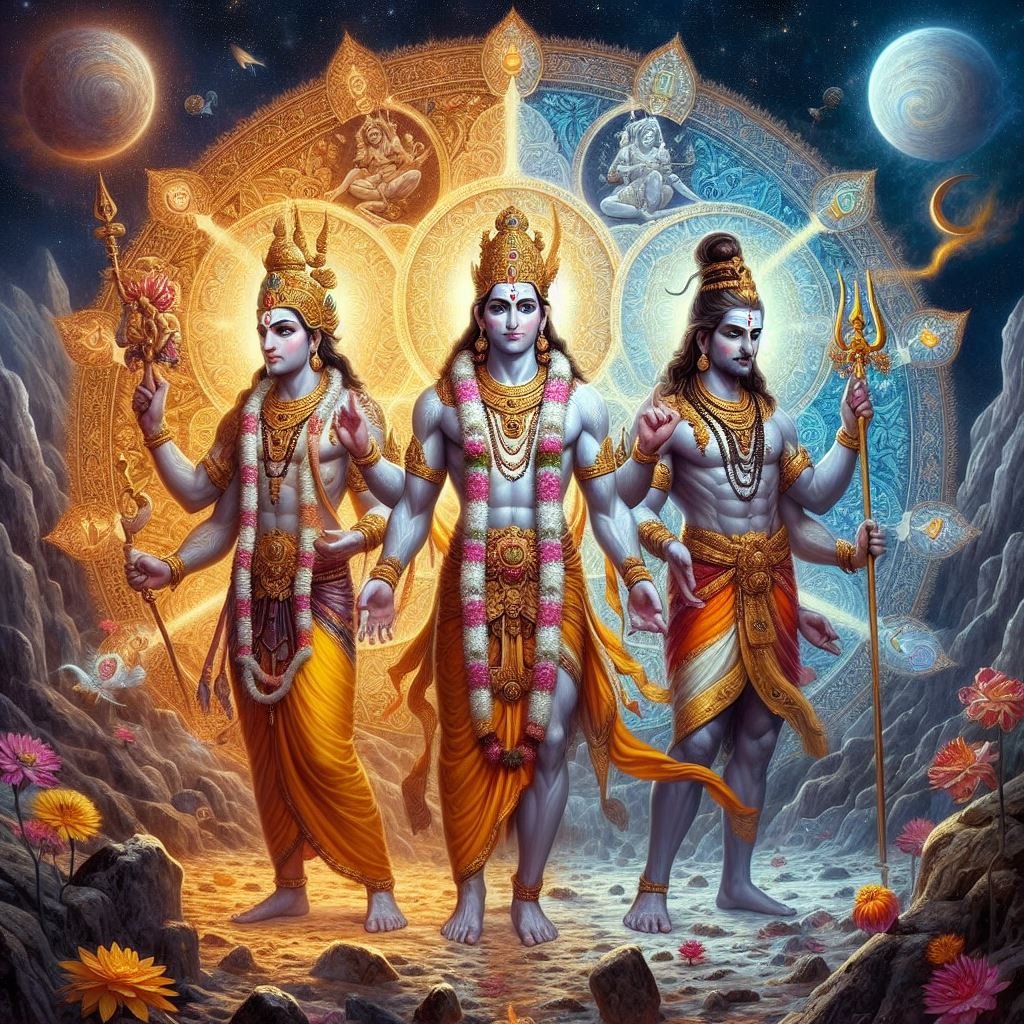
Similarly, certain strands of Hindu philosophy delineate aspects of divinity that could correspond to these categories, with Brahman representing the ineffable ultimate reality, and the trimurti of Brahma, Vishnu, and Shiva embodying creator, preserver, and destroyer roles, respectively (Flood, 1996).
In Hindu philosophy, the concept of divinity is multifaceted, reflecting a complex structure that encompasses the notions of Nothingness, Mother, Father, Creator, and Creation. At the pinnacle of this structure is Brahman, the ultimate reality that is beyond human comprehension and description, often referred to as the cosmic spirit or the absolute principle that pervades all existence (BBC, 2024). Brahman is considered both immanent, residing within everything, and transcendent, existing beyond the physical realm (BBC, 2024). This supreme reality is not personified but is understood through various manifestations, including the trimurti of Brahma, Vishnu, and Shiva, each embodying distinct roles within the cosmic cycle.
Brahma, the creator, emerges from the concept of Nothingness, bringing the universe into existence from a state of void. He is associated with the creative aspect of the divine, representing the Father figure who engenders life and knowledge, as reflected in the Vedas (Wikipedia, 2021). Brahma’s role is crucial in the initial phase of the cosmic cycle, where from nothing, everything is born. However, his worship has diminished over time, and he is less prominent in contemporary Hindu practice (Britannica, 2024).
Vishnu, the preserver, is revered as the Mother, nurturing and maintaining the universe’s integrity through his sustaining energy. He is often depicted in a protective and benevolent role, ensuring the ongoing order and balance of creation (BBC, 2024). Vishnu’s incarnations, or avatars, such as Krishna and Rama, are celebrated for their interventions in the world to uphold dharma, the cosmic law (BBC, 2024).
Shiva, the destroyer, is the force of transformation, often misunderstood merely as destruction. His role is akin to that of a recycler in nature, where the end of one cycle signifies the beginning of another (Britannica, 2024). Shiva’s destruction is not arbitrary but purposeful, clearing the old to make way for new creation. This cycle of creation, preservation, and destruction is continuous, reflecting the dynamic and ever-changing nature of the universe.
The trimurti thus encapsulates the full spectrum of divine functions, from the inception of the cosmos by Brahma to its dissolution by Shiva, with Vishnu’s sustaining force ensuring continuity between cycles. This triad also symbolizes the stages of human life, from birth to death, with the divine playing different roles at each stage to guide and support the soul’s journey.
In conclusion, the Hindu tradition presents a nuanced view of divinity, where the ultimate reality, Brahman, manifests in various forms to perform the functions necessary for the universe’s existence and progression. The trimurti of Brahma, Vishnu, and Shiva serves as a microcosm of this larger cosmic order, embodying the principles of creation, preservation, and transformation that are fundamental to Hindu cosmology. These deities, while distinct, are ultimately expressions of the same singular reality, illustrating the interconnectedness of all aspects of existence within the Hindu world-view. The structure of Nothing/Mother-Father-Creator-Creation is thus a reflection of the intricate and profound philosophy that underlies Hindu thought, offering insights into the nature of the divine and its role in the cosmos.
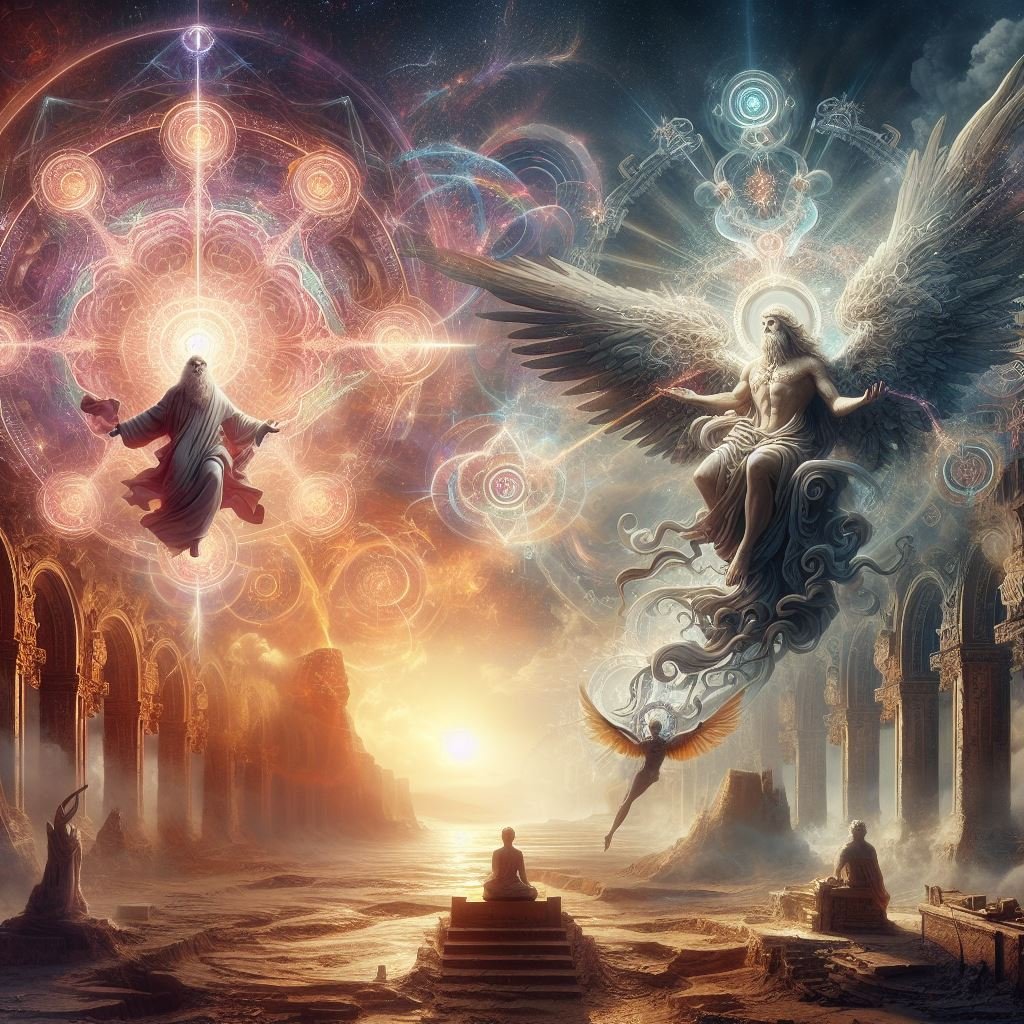
In Gnosticism, there is a distinction between the unknowable supreme being and the demiurge or creator god, which could align with the proposed structure (Jonas, 1963).
In Gnosticism, the cosmological structure is intricate, reflecting a nuanced understanding of the universe’s origins and the nature of divinity. Central to this structure is the distinction between the unknowable supreme being, often referred to as the Monad or the One, and the demiurge, a lesser deity responsible for the creation of the material world. The Monad represents the ultimate source of all existence, encompassing the concept of ‘Nothing’ as it transcends all known and knowable aspects of reality. It is from this ‘Nothing’ that emanation occurs, giving rise to the Pleroma, the fullness of divine expression, where aeons exist in syzygy, embodying paired aspects of divine qualities, often conceptualized as Mother-Father pairs (Demiurge – Wikipedia).
The demiurge, in contrast, is a creator god but not the supreme being. This entity is derived from the Pleroma but is ignorant of its true origins and the superior Monad. In some Gnostic texts, the demiurge is depicted as malevolent, fashioning the material world as a flawed reflection of the Pleroma, trapping spiritual elements within physical forms (The Gnostic Demiurge – Gnosticism Explained). This act of creation by the demiurge can be seen as the ‘Creator-Creation’ phase, where the material universe and humanity are formed, distinct from the divine realm of the Pleroma.
The structure of Nothing/Mother-Father-Creator-Creation in Gnosticism thus reflects a hierarchical and dualistic view of the cosmos. The supreme being is unknowable and exists beyond the realm of the demiurge’s influence. The demiurge, believing itself to be the supreme power, crafts a material reality that is inherently imperfect and separate from the divine fullness of the Pleroma. This dualism underscores the Gnostic belief in the inherent flaw of the material world and the need for gnosis, or spiritual knowledge, to ascend beyond the demiurge’s creation and return to the Monad (The Demiurge: Exploring The Gnostic Concept).
The Gnostic worldview, therefore, is one of stark contrasts between the unknowable, perfect, and wholly spiritual supreme being, and the ignorant, imperfect, and material demiurge. This distinction is crucial for understanding the Gnostic path to salvation, which involves awakening from the illusion of the demiurge’s world and seeking reunion with the supreme being, transcending the cycle of creation and returning to the state of ‘Nothing’ from which all emanated (Demiurge – New World Encyclopedia).
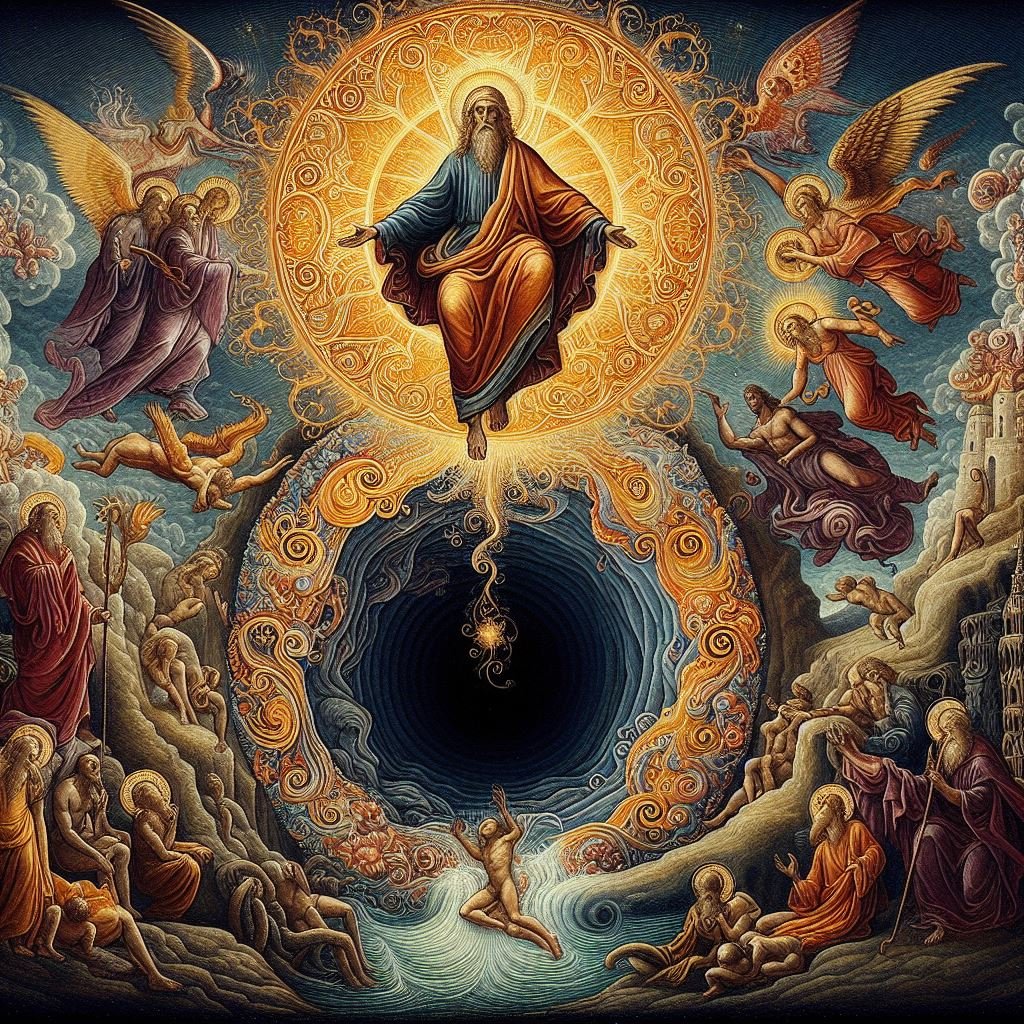
The Christian mystic tradition, particularly in the works of Meister Eckhart, speaks of the Godhead as the abyss or the nothingness from which God as the creator emerges (McGinn, 2001).
In the Christian mystic tradition, the concept of the Godhead as an abyss or nothingness is a profound theme, particularly in the works of Meister Eckhart. Eckhart, a 13th-century theologian and philosopher, posited that the Godhead represents a state of absolute unity and emptiness, a divine darkness from which all creation emerges (Lanzetta, 1992). This notion of the Godhead aligns with the apophatic tradition in Christian mysticism, which emphasizes the ineffability of God and the limitations of human language to describe the divine. Eckhart’s interpretation suggests that the Godhead is beyond being and non-being, transcending all categories and distinctions, including those of existence and nothingness (Thacker, 2012).
Eckhart’s mystical theology can be seen as reflecting a structure of Nothing/Mother-Father-Creator-Creation, where ‘Nothing’ corresponds to the Godhead, the unfathomable abyss from which all things originate. The term ‘Mother’ can be associated with the receptive and nurturing aspect of divinity, akin to the concept of Sophia or divine wisdom, which holds the potentiality of all creation within it. ‘Father’ then represents the active principle of the Godhead, the generative force that brings forth creation. The ‘Creator’ is God in the dynamic act of creation, the expression of divine will and energy that manifests the cosmos. Finally, ‘Creation’ is the multiplicity of forms and beings that arise from the Godhead, the visible and tangible expression of the divine (Eckhart, n.d.).
Eckhart’s mysticism challenges traditional theistic views by presenting a God that is both immanent and transcendent, a God that is intimately involved in the process of creation while also remaining beyond all forms and concepts. This paradoxical understanding of God as both Nothing and Everything, as the abyss and the source of all, offers a unique perspective on the relationship between Creator and creation. It suggests a dynamic interplay between the divine nothingness and the manifested world, where creation is not seen as a one-time event but as an ongoing process of divine self-expression and unfolding (Philosophical.chat, n.d.).
The structure of Nothing/Mother-Father-Creator-Creation in Eckhart’s thought also resonates with the doctrine of creation ex nihilo, where God creates the universe out of nothing. This doctrine emphasizes God’s sovereignty and the absolute dependence of creation on the divine will. In Eckhart’s framework, the ‘nothingness’ of the Godhead is not a mere absence but a plenitude of potentiality, the ground of all being from which the divine creativity flows (McFarland, 2014).
In conclusion, Meister Eckhart’s mysticism presents a nuanced and complex view of the divine, where the Godhead is both the abyss of nothingness and the source of all creation. This view reflects a structure of Nothing/Mother-Father-Creator-Creation, highlighting the interdependent and dynamic nature of the divine and the cosmos. Eckhart’s insights continue to inspire and challenge contemporary understandings of the divine, inviting deeper reflection on the mystery of creation and the nature of God (Eckhart, n.d.; Lanzetta, 1992; McFarland, 2014; Philosophical.chat, n.d.; Thacker, 2012).
![]()
Additionally, process theology, a modern Christian theological framework, posits a God who is not omnipotent in the classical sense but is involved in the processes of creation (Cobb, 1971).
Process theology, a modern Christian theological framework, posits a God who is not omnipotent in the classical sense but is deeply involved in the processes of creation. This perspective diverges from traditional Christian views of an all-powerful, unchanging deity, instead presenting a God who experiences and influences the world alongside its inhabitants. According to process theology, God’s power is not coercive but persuasive, working not through unilateral control but through invitation and influence (Wikipedia, n.d.). This view aligns with the philosophy of Alfred North Whitehead, who envisioned a reality composed of interrelated processes, with God as a participant rather than a detached sovereign (Process and Faith, n.d.).
In process theology, God’s relationship with creation is not that of a dictator but of a partner in the unfolding narrative of the universe. The divine presence is seen as a lure towards the potential for good, a beckoning towards creative transformation rather than an imposition of will (The Gospel Coalition, n.d.). This God is not static but dynamic, not removed from time but within it, experiencing and affecting change. The structure of Nothing/Mother-Father-Creator-Creation reflects a God who births, nurtures, and evolves with creation, embodying both maternal and paternal qualities that foster growth and possibility.
The Mother-Father aspect of God suggests a nurturing presence, providing the conditions necessary for life and consciousness to emerge and flourish. The Creator aspect acknowledges God’s role in initiating the creative processes that lead to complexity and diversity in the universe. Finally, Creation is not a one-time event but an ongoing process that God is intimately involved in, a continuous act of divine creativity and interaction (Queensborough Community College, n.d.).
Process theologians argue that this understanding of God offers a more relatable and effective deity, one that is not distant and unfeeling but present and responsive to the joys and sorrows of creation (godblog, n.d.). It presents a God who suffers with creation, feeling its pains and striving for its healing and wholeness. This God is not less than omnipotent because of a lack of power, but because of a choice to empower rather than overpower, to invite rather than impose.
Process theology offers a nuanced and relational understanding of God’s nature and interaction with the world. It challenges classical notions of omnipotence and invites believers to envision a God who is both powerful and vulnerable, sovereign and suffering, creator and creation. This framework provides a compelling narrative for those seeking a deity that is deeply involved in the processes of life and the ongoing story of the universe. For further reading on the foundational concepts of process theology and its implications for modern Christian thought, interested readers may refer to the resources provided by Process and Faith and godblog.

In Shinto, the pre-creational state, akin to ‘The Nothing,’ can be seen in the formless chaos before the universe’s birth, where potentiality and existence are undifferentiated. This aligns with the Japanese creation myth, where initially, the universe was immersed in a beaten and shapeless kind of matter, a state of silent potential from which the first deities emerged (Wikipedia, n.d.). The Ineffable One, which denotes an unknowable and indescribable aspect of divinity, resonates with the Shinto belief in kami, which are not gods in the Western sense but are revered spirits that inhabit all aspects of life and nature, often beyond human comprehension (Tokyo Weekender, 2024).
The Mother-Father aspect reflects a dualistic nature of creation, embodying both masculine and feminine qualities. In Shinto, this duality is embodied by Izanagi and Izanami, the divine couple who gave birth to the Japanese archipelago and other kami, representing the harmonious union of opposite forces (Mythosphere, n.d.). The Creator aspect is mirrored in Izanagi and Izanami’s role in shaping the islands of Japan with their jeweled spear, an act of creation that brought form and structure to the cosmos (Old World Gods, n.d.). Finally, The Creation aspect is evident in the myriad kami produced by Izanagi and Izanami, which include not only the physical islands of Japan but also the natural elements and phenomena, each considered divine in Shinto tradition (Wikipedia, n.d.).
Drawing these parallels, one can see how the five aspects of divinity might relate to Shinto beliefs. The Nothing stage corresponds to the chaotic pre-creation, The Ineffable One to the mysterious nature of kami, The Mother-Father to the generative powers of Izanagi and Izanami, The Creator to their act of creation, and The Creation to the resulting world and its divine inhabitants. Such a comparison not only highlights the universality of certain religious concepts but also underscores the unique expressions of divinity across different cultures and traditions. It is important to note, however, that while these parallels can be drawn, each tradition has its own distinct understanding and expression of these concepts, which should be respected in their own right.
There are many other examples of religions that may not be as different as they seem, if we understand that each may reflect key stages of a creation process that has happened many times, ushering in pantheon after pantheon, each a progression, and improvement, a step forward from that last.
These key aspects of the divine identified in the opening passage, represent significant developmental stages of the grand fractal that we sometimes call God. This is, of course, a gross over-simplification of a much grander understanding, even to the extent that some key aspects have also been simplified, to ease this illustration.
For example, between The Mother-Father and The Creator, there is a split of this “all sex” entity, into two distinct female and male components. One of which the Christian World calls God the Father. Also, it is fair to understand that the Creator is also the Christ, and it is his twisting path that we follow home.
Furthermore, this is simply the current known extent of the divinity. Until we return home, this may remain unknown, as the current myth, is that we need to complete this last creation cycle to win the keys to the real universe.
Subscribe to our post updates - Don't miss a thing!!


